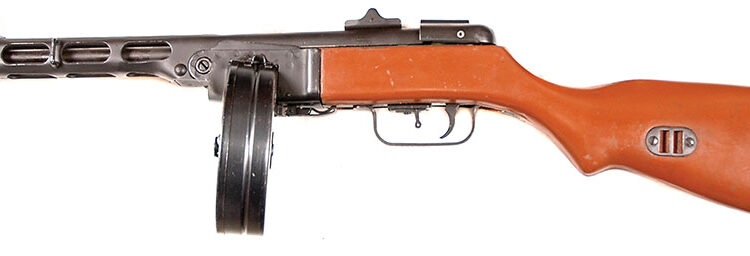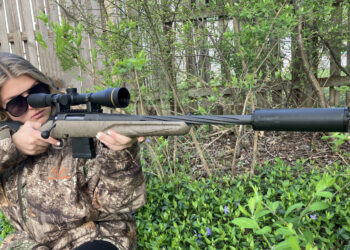By Frank Iannamico
In 1939, just a month after the joint German-Soviet invasion of Poland in September, the Soviet Red Army invaded Finland. The primary reason used for the 30 November 1939 attack was to reclaim territory lost during the Russian Civil War of 1917. Soviet leaders wanted to extend their borders primarily as a buffer zone to protect the city of Leningrad from a foreign invasion.
The Red Army leaders were quite confident that they could easily overcome any resistance from the Finnish army, which they outnumbered more than three to one. The Soviets also had substantially more artillery, tanks and aircraft. What the Soviets didn’t count on was the heavily forested terrain and narrow unpaved roads, which provided a perfect environment for the Finn’s guerilla tactics. Armed with submachine guns, the Finnish Army put up a fierce resistance by continually ambushing the Soviet forces and then melting into the forest. The Soviets eventually prevailed in March of 1940 and hostilities ended. But the Soviets suffered far heavier losses than anticipated and settled for far less than a total victory, but lessons were learned.
Along with the tactics of the Finns, one of the weapons instrumental in keeping the invading Soviet Army at bay was the 9mm Suomi KP-31 (konepistooli) submachine gun. The KP-31’s fast cyclic rate, and large capacity drum magazine, was responsible for inflicting many casualties on the Soviets. The Soviets were obviously impressed as they soon began fielding their own submachine guns and drum magazines that were suspiciously similar to the Finn’s.
The Soviets had taken note of the German’s limited use of a rapid firing pistol caliber MP18 submachine gun fielded near the end of World War I, and began development of a domestic design as early as 1926. However, weapon develoment had a low priority in the post First War years.
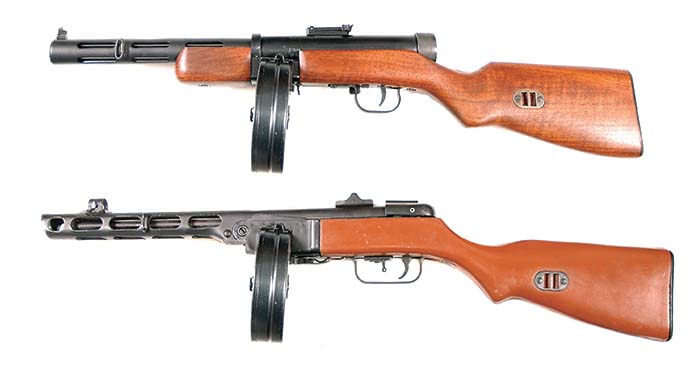
The 7.62x25mm PPD Submachine Gun
Soviet designer Vasiliy Degtyarev had introduced several promising weapon designs by 1931. Development continued until 1934 when his 7.62x25mm M1934 Degtyarev submachine gun, the PPD (Pistolet-Pulemyot Degtyarev), was adopted for arming senior officers, but production of the PPD was very limited. Degtyarev continued his work and introduced an improved model, the M1934/38 PPD that used a 25-round box or 73-round drum magazine. The drum magazine had an extension on it to fit up through the stock. However, in 1939 a decision was made by the People’s Commissariat for Defense to stop production and withdraw existing submachine guns from service. They determined the submachine gun would have a limited range, waste ammunition and had little military value – ironically an opinion shared by the U.S. and Great Britain at the time. The Soviet leaders changed their minds during the disastrous “Winter War” with Finland. On 6 January 1940 the Commissariat for Defense ordered that large numbers of submachine guns be issued to the army.
Vasiliy Degtyarev continued efforts to improve his PPD design that resulted in the adoption of the PPD 40. The PPD 40 used a drum magazine, which differed from that of the PPD 34/38 model, by having only feed lips at the top in place of a magazine extension mounted on the top. This design improved feeding as the PPD 40 was designed only for drum magazines. The PPD 40 was produced from 1940 to 1941, with approximately 87,000 being built. The PPD submachine guns were manufactured before the widespread use of metal stampings and had many forged, machined parts that required a lot of tooling and skilled labor to produce.
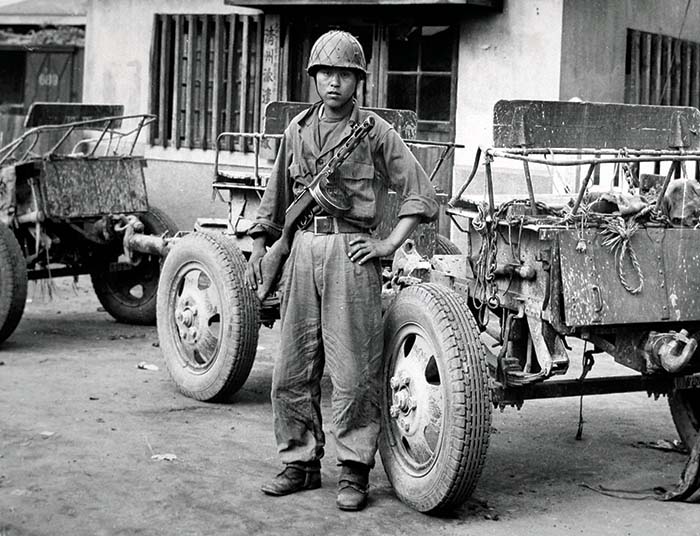
The 7.62x25mm PPSh 41
The PPSh 41 submachine gun, and the pressed metal technology to produce it, was conceived by Soviet designer Georgiy Shpagin. Shpagin was a former Russian army ordnance man who after his discharge began to work at the Kovrov Ordnance factory; the same facility where the PPD submachine guns were ultimately manufactured. During August of 1940, Shpagin’s first prototype submachine gun was tested. The weapon proved to be reliable under all conditions and its pressed steel, riveted and welded construction required few skilled workers or specialized machine tools to produce. The PPSh was adopted in December of 1940 as the M1941 Shpagin submachine gun or Pistolet-Pulemyot Shpagina. Production began during the fall of 1941.
PPSh 41 production was first organized in a network of factories around the Moscow area, each making parts or subassemblies to be assembled in centralized plants. Initial production was slow but soon grew exponentially. There were many companies involved in making PPSh 41 weapons and parts, including a few who had no previous experience with weapon manufacture, these including the Moscow Automotive Factory Zavod imeni Stalin (ZIS). The ZIS factory symbol was a Cyrillic character that looks like a number 3, which represents the Roman letter Z. Another PPSh 41 factory was the Scetmach plant in Moscow that marked their receivers with a Cyrillic letter C that translates to the letter S. Other factories contributing to the production of the PPSh 41 submachine gun were: the Kirov Aviabuilding Plant, the F. Dzerzhinskly Factory, the Korov Plant, the Krasnuj Stamping Plant, the Tbilisi Instrument Factory, and the Tbilisi Train Factory. However, by October, due to the advancing German army, many of the factories were abandoned and relocated to the Vyatskie Polyany Machine Building Plant. The designer Shpagin was appointed as the chief designer of the facility, which became one of the primary manufacturers of PPSh submachine guns during the war. The PPSh drum magazine manufacturing plant, originally located near Moscow was also forced to relocate to the Vyatskie Polyany area. Many Soviet made PPSh drums and some box magazines will have the Star in a Shield trademark of Vyatskie Polyany plant.
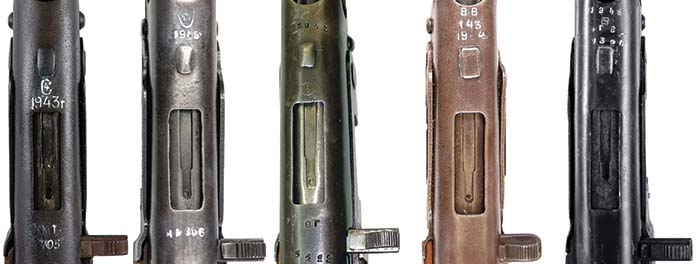
The PPSh 41 consisted of eighty-seven separate parts, twenty-four of the parts were fabricated from pressed carbon steel, and only five of the components were forgings. The four-groove chromium-lined barrel was pressed and pinned to the receiver. The receiver extended out to form a sheet metal barrel shroud with cooling slots. The end of the shroud formed a compensator to reduce muzzle climb. The receiver was hinged at the front; at the back of the receiver was a spring-loaded end cap that had an L shaped lug at the bottom that secured it to the trigger frame. By pushing the end cap forward the lug was disconnected from the trigger frame and the receiver could be lifted upward for maintenance, pivoting on the front hinge.The bolt had a fixed firing pin and a cocking handle safety that could secure the bolt in an open or closed position. The submachine gun was capable of both semiautomatic and full-automatic fire, with an automatic cyclic rate of 900+ rounds per minute. The sliding mode of fire selector is located inside the trigger guard, forward of the trigger. The full automatic position is forward, semiautomatic to the rear. The weapon operates from an open bolt. The ejection port is located in the center of the receiver and spent cases are ejected straight up.
The PPSh was fed from a 71-round drum magazine, and except for the feed lip design, was similar to that used in the PPD 40 (PPD 40 drums have one straight feed lip). However, the drum magazines were difficult to carry, hard to load in the field, and often caused the weapon to jam. The drums were also time consuming to manufacture, and caused a delay in getting the PPSh weapons into the field. As a result, in 1943, a curved 35-round double stack, single feed magazine was designed for the PPSh. Thin steel used in early production of the box magazines caused many problems, which were easily solved by using thicker sheet metal in their construction. The single feed design of the box magazine made them hard to load to full capacity by hand.
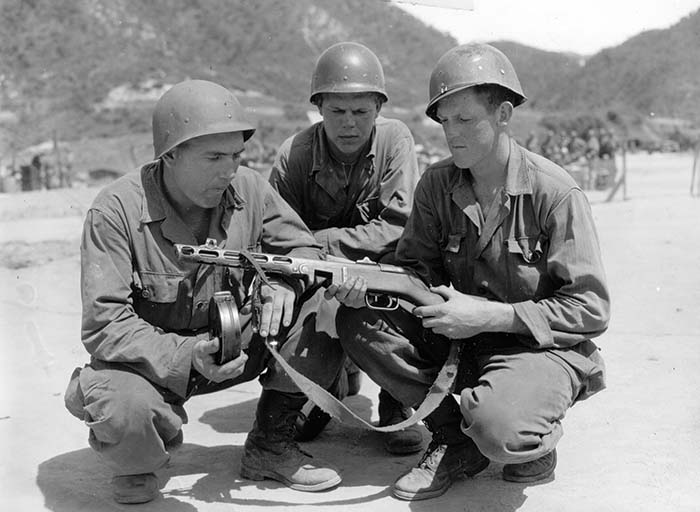
Early production PPSh 41 submachine guns were fitted with a tangent style rear sight calibrated out to a range of 500 meters. To simplify manufacture, the tangent sight was replaced by a simple U-notch, two-leaf flip sight with one leaf marked 10 for 100 meters and the second marked 20 for 200 meters. The front sight was a threaded post adjustable for elevation and the sight could also be drifted left or right to adjust for windage. Another change was to replace the detachable front sight hood, which was often lost in the field. The removable front sight hood (which is missing from most examples) was replaced by a fixed hood permanently welded to the barrel shroud. The early production hinged receiver used a one-piece front receiver pin that had a circular groove in the center and was retained in place by a round piece of spring steel. The early style pin was replaced by an improved two-piece pin that was easier to remove. During late 1942, the trigger frame magazine well was reinforced by extending the frame upward partially enveloping the sides of the receiver. Another problem that arose in the field was the buffer, which could not stand up to hard use, and was in short supply. Some of the PPSh submachine guns studied had a reinforcing bolt through the wrist area of the stock to keep it from breaking.
Over five million PPSh 41 submachine guns were manufactured during World War II. In 1943, Iran made an agreement with the Soviets and received drawings and tooling to manufacture a copy of the PPSh 41 under license at the Mosalsalsasi factory near Teheran, Iran. The submachine gun was designated as the Model 22. A number of the Iranian made submachine guns were issued to the Red Army during the war. Manufacture of the Model 22 continued after the war ended. During World War II many captured PPSh submachine guns were fielded by the Germans; some were converted to 9mm using MP40 magazines. Post war variants were made in China as the Type 50, Hungary as the Model 48, North Korea as the Type 49, and in Poland.
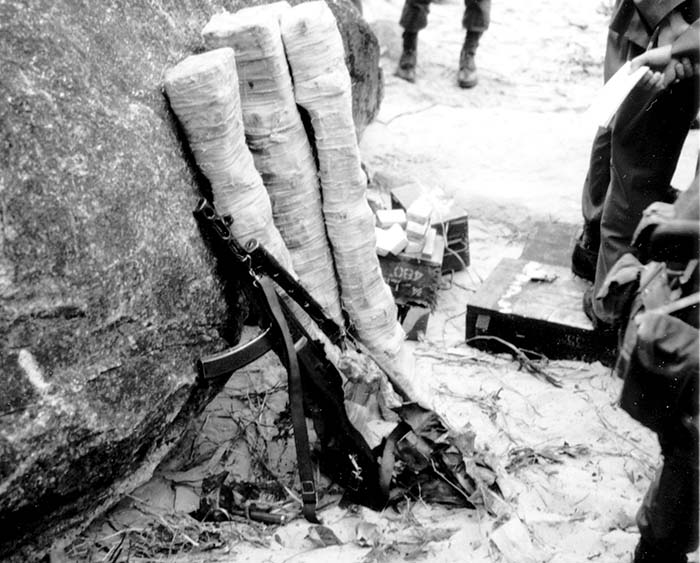
The Chinese manufactured the Type 50 in at least three factories in China. Different arsenal markings include: the circular gear symbol of the Communist 90th Arsenal, Factory 626, and an unknown facility using star with three horizontal lines on the left side and two lines on the right. The rear flip sight leaves on the Chinese Type 50 has apertures instead of U-notches as on Soviet models, and is attached with counter-sunk rivets, while Soviet rear sights were attached with round head rivets. Some Chinese Type 50 submachine guns had wooden stocks that were made in two pieces. The two-piece stocks were joined together with glue, but during hard use in the field the stocks often split apart at the joint. It has often been reported that the Chinese version will not accept a drum magazine. That bit of misinformation was first published in a U.S. Ordnance report. Because the dimensions of the drums vary to some degree, some drums will fit in the Type 50, while others may not; this was also true of the Soviet PPSh 41. The Soviets addressed the problem by selecting drums that fit in a particular submachine gun and then etching the host weapon’s serial number on the drums that fit.
The North Korean Type 49 can be identified by a star inside of a single or double circle stamped on the top of the receiver, along with the serial number and year of manufacture. The Type 49 has features of both Chinese and Soviet models. The rear sight is a two leaf type with 100 and 200 meter apertures, the ejection port is rectangular shaped and the trigger frame has the late Soviet style receiver reinforcing tabs. The receiver pivot pin is solid and staked in place. The weapon was manufactured from 1949 to approximately 1955. The plant producing the submachine guns was located in Pyongyang. The factory was overrun by UN and South Korean troops during the conflict, but could only be held a few days before it was retaken by North Korean troops. The factory was relocated further north by the enemy and was back in production in just a few weeks.
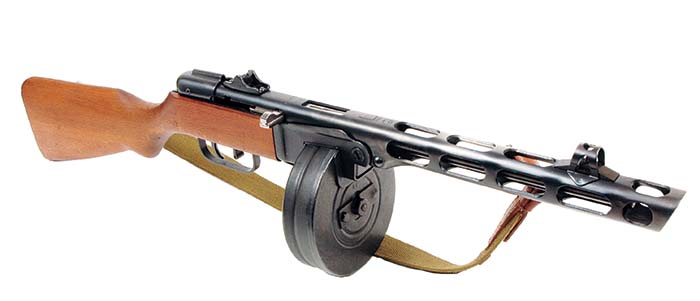
Hungary adopted and manufactured a copy of the Soviet 7.62x25mm PPSh M1941 as the 48 Minta. The 48M was manufactured by Fémáru Fegyver és Gépgyár (FÉG), Budapest, from 1949 to 1955. The date of manufacture was stamped on top of the receiver along with the FEG arsenal logo and the numbers 01 inside of a circle. The trigger frame has the receiver reinforcement tabs at the top; the two-leaf rear sight has U notches for sighting.
The post World War II Polish copy of the PPSh 41, the PM wz.41, was manufactured at the Zaklady Metalowe Lucznik plant located in the city of Radom, Poland. The factory logo was a number 11 inside of a horizontally placed oval stamped on top of the receiver. The trigger frame has the receiver reinforcement tabs at the top, and the two-leaf rear sight has U notches for sighting. The ejection port has a rectangular shape.
In addition to Russia’s use in World War II, the PPSh and its variants saw widespread use during the Korean War by the North Korean and Chinese troops. The submachine gun was also fielded by the North Vietnamese and Viet Cong (K50) during the Vietnam War. Weapons captured during the aforementioned conflicts were from every country that produced them.
During the 1950s, the Austrian Army designed a plastic replacement stock for the PPSh 41. The plastic stocks were a light or dark maroon color.
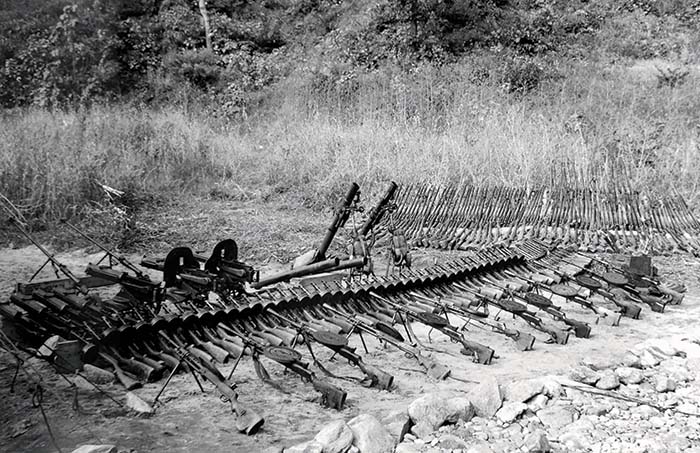
The 7.62x25mm Cartridge
The 7.62x25mm round was originally developed for Fedor Tokarev’s prototype pistols in 1929. The dimensions of the Soviet round are nearly identical to that of the German 7.63 Mauser cartridge, but most sources warn that the Tokarev round not be used in pistols intended for the Mauser cartridge. The bottleneck Tokarev cartridge was also used in Soviet submachine guns, and there were many types produced specifically for submachine gun use. Early Soviet production used brass cases, however because of brass being a critical material in wartime, around 1942 the case material was changed to painted or copper washed steel. Early bullets had a lead core; later production used a combination of a steel core inside a lead envelope. The steel-lead bullets had a slightly longer overall length to retain the weight of the lead core bullets. The bullet jackets were steel clad with gilding metal. There were a number of specialty loadings that included: tracer, armor-piercing, armor-piercing-incendiary, flame-thrower igniter, blank and dummy. Bullet weight of the standard ball round nose bullet was approximately 85.8 grains with a muzzle velocity of 1,492 feet per second. The round generates very little recoil in a PPSh 41 submachine gun, making the weapon very controllable during full-automatic fire.
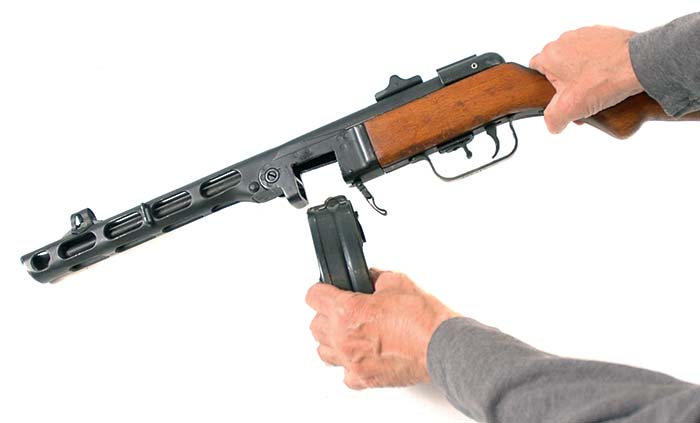
PPSh 41 Specifications
Stock: Fixed wooden stock
Overall length: 31.1 inches
Barrel length: 10.6 inches
4-groove barrel, chromium lined
Magazine: 71-round drum/35-round stick
Loaded weight: 12.0 lbs w/drum / 9.5 lbs w/stick
Cyclic rate: 900+ rounds per minute
Semi and full automatic operation
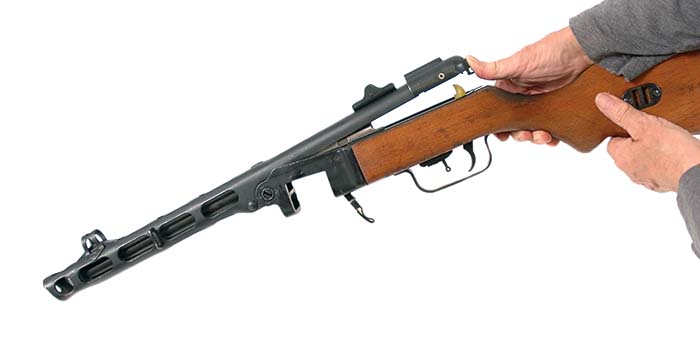
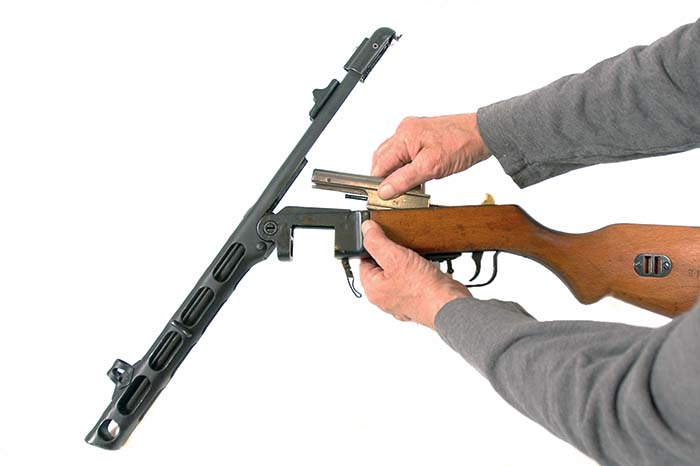
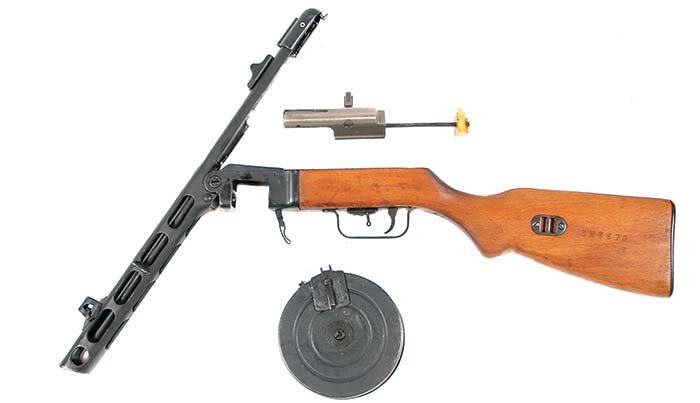
| This article first appeared in Small Arms Review V18N5 (October 2014) |



